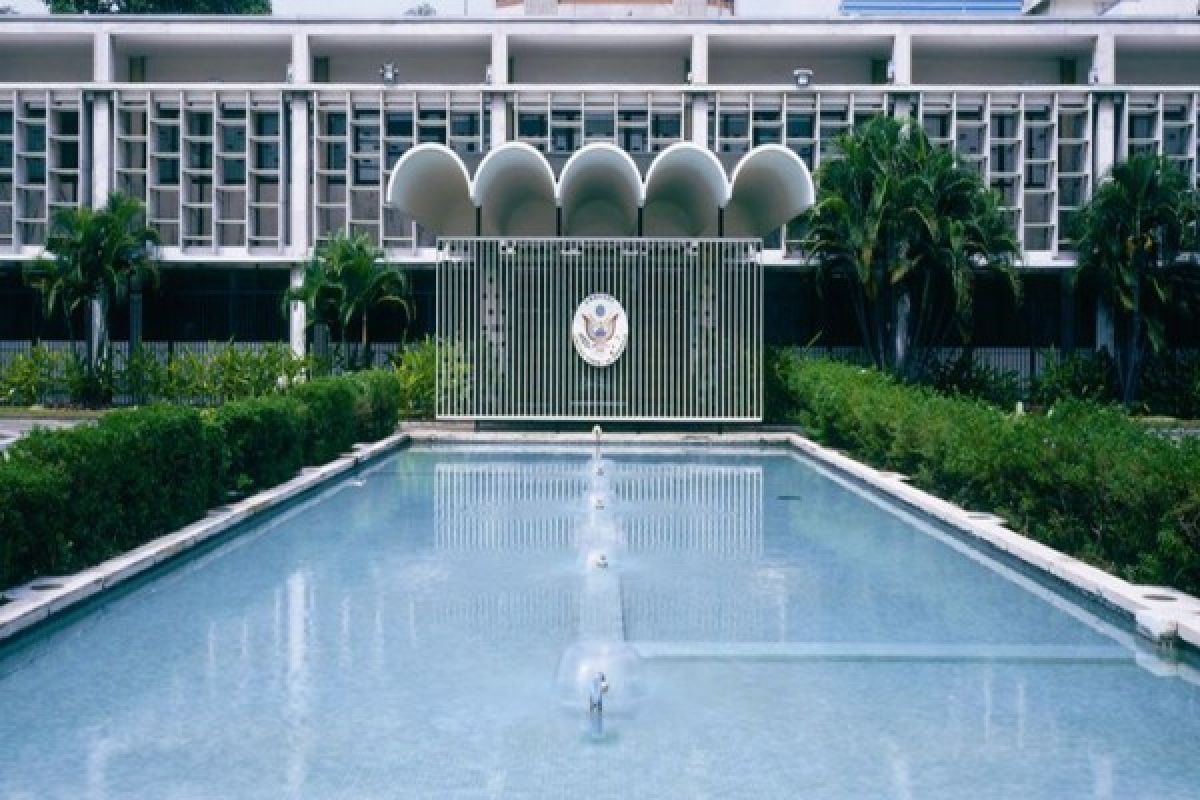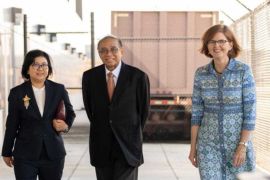"You may have noticed that the construction is not quite complete. While the primary building is completed, there is more work being done. We are constructing a heritage building on the site that was used by a Republic of Indonesia delegation during negotiations for Indonesia’s independence with the Dutch in 1949. We expect to complete this building along with our consular pavilion by the end of 2019," Donovan noted in a statement issued by the US Embassy here, Tuesday, on the dedication behind the construction of the new building.
The end result will be a compound touching on all areas of the US partnership with Indonesia, right from the shared history of the two countries, to the thread of cultural connections woven throughout the design, and to the US and Indonesian workers, who worked side-by-side to build the new embassy, he noted.
"As I like to say, our new home was 'built by Indonesian and American hands,'" he remarked.
According to the ambassador, the building is the latest example of that enduring commitment to the partnership and the Indonesian people.
The partnership between the United States and Indonesia is built on a foundation of shared democratic values and common interests, such as education, shared expertise, and innovation, to create a brighter future, he stated.
"You will see examples of that innovation in our new building. In thinking about the design of the building, we wanted to reduce the impact on the environment by taking advantage of all that our location offers. The architects and designers took into consideration Jakarta’s climate, including its hot, sunny days, and as a result, the building uses the latest in environmental sustainability features that reduces our energy consumption. Covered walkways topped with solar panels reduce overall energy needs. The exterior metal sunshades you see around the outside of the building limit sun exposure and reduce the demand for air conditioning," he elaborated.
Tapping into Jakarta’s rainfall, the building’s design incorporates water conservation strategies to irrigate our green landscaped areas by collecting and re-using storm run-off.
The innovations are not solely limited to environmental and sustainability features but also pay tribute to Indonesia’s culture, as the building’s façade is modeled after patterns of indigenous architecture and woven textiles, and this theme is omnipresent throughout the building's interiors.
"The artwork in the building features Indonesian art inspired by America and American art inspired by Indonesia, thanks to our Art in Embassies program. Art in Embassies is a public-private partnership to promote cross-cultural dialogue and mutual understanding through visual arts and dynamic artist exchanges. Every day, Embassy employees and visitors have a visual reminder of the connection between US and Indonesian art and culture," he stated.
Reporter: Fardah
Editor: Suharto
Copyright © ANTARA 2019





